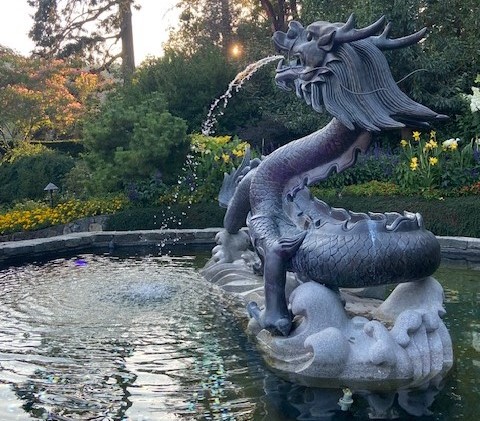Landscape, Plants, Hardscape & Decks
Nestled on Vancouver Island in British Columbia, Canada, Butchart Gardens is a world-renowned botanical garden that attracts over a million visitors annually. Its stunning landscapes, vibrant flowers, and meticulously designed water features have made it a must-see destination for garden enthusiasts and tourists alike.
...
In summer 2023, seaweed drew widespread concern and media attention as a giant “blob” of sargassum invaded Florida as well as parts of the Caribbean and the Gulf of Mexico. Despite the bad press, messy beaches and pungent odor, a look beneath the surface reveals a vast world of diverse complexity, beauty and practical potential.
...
Given that ships and shipwrecks are inherently tied to water, it only makes sense that interactive, ship-themed splashpad water features are a natural fit, for ocean enthusiasts and landlopers alike. Here’s a look inside the popular interactive-fountain genre.
...
It’s one of history’s most influential design traditions. Japanese gardens are much more than pagodas, lanterns and Bonsai trees, says Jason Brownlee. Studying these timeless gardens that are so artfully inspired by nature is, he says, one of the best ways to elevate watershape and landscape design of almost all types.
...
Nestled within the heart of the Sierra Nevada mountains in California lies Yosemite National Park, a land of breathtaking natural beauty and awe-inspiring landscapes. The waters that have shaped its iconic landscape stand among the park's many natural wonders.
...
For most of the past century, natural waterways in Southern California have existed as lifeless concrete channels. Efforts to “regreen” some of those once-beautiful waters have given rise to hopes that the Los Angeles River, and others like it, will one day recapture their former natural health and riparian beauty.
...
It’s true that some artificial rock installations are not convincing. In an effort to solve those disconnects, today’s cast-concrete rock panel systems are taken from natural stone. When installed and finished correctly, rock panels can look like the real thing.
...
The marriage between rockwork and architecture can be a contentious one, especially when the visual relationship isn’t thought out ahead of time. Making rocks work in built spaces requires strategic thinking, says Terence Thornton and Kevin Kraft, with an eye toward the way nature does things.
...
Working for one of the leading pond suppliers and builders in the U.S., Jennifer Zuri has seen countless examples of beautiful, naturalistic watershapes. When it came time to installing a pond for her and her family, even with all her experience, she wasn’t completely prepared for the positive impact it would have on their lives.
...






















Mystic Muralism on the Shores of Lake Chapala